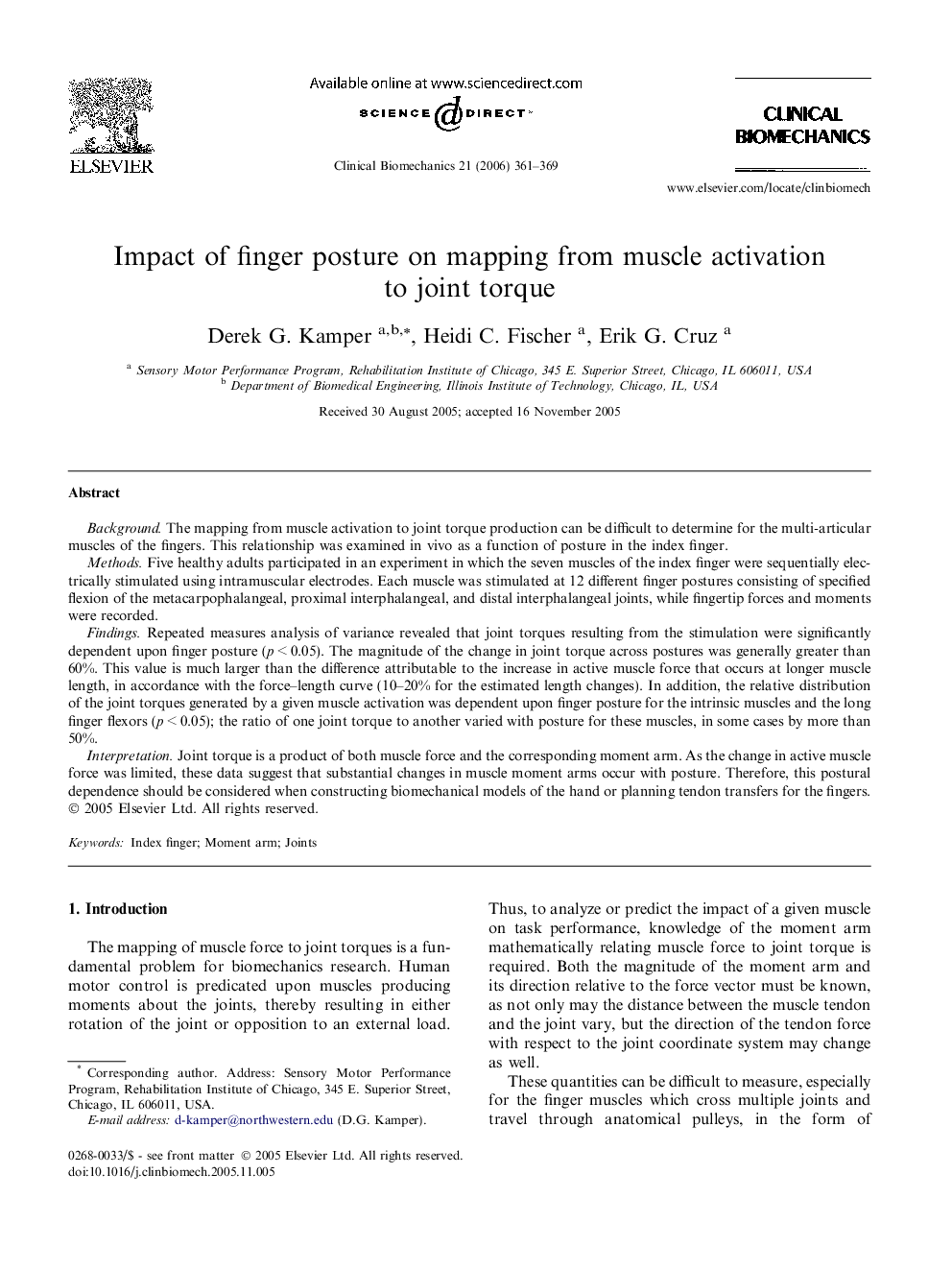| کد مقاله | کد نشریه | سال انتشار | مقاله انگلیسی | نسخه تمام متن |
|---|---|---|---|---|
| 4051601 | 1264998 | 2006 | 9 صفحه PDF | دانلود رایگان |

Background. The mapping from muscle activation to joint torque production can be difficult to determine for the multi-articular muscles of the fingers. This relationship was examined in vivo as a function of posture in the index finger.Methods. Five healthy adults participated in an experiment in which the seven muscles of the index finger were sequentially electrically stimulated using intramuscular electrodes. Each muscle was stimulated at 12 different finger postures consisting of specified flexion of the metacarpophalangeal, proximal interphalangeal, and distal interphalangeal joints, while fingertip forces and moments were recorded.Findings. Repeated measures analysis of variance revealed that joint torques resulting from the stimulation were significantly dependent upon finger posture (p < 0.05). The magnitude of the change in joint torque across postures was generally greater than 60%. This value is much larger than the difference attributable to the increase in active muscle force that occurs at longer muscle length, in accordance with the force–length curve (10–20% for the estimated length changes). In addition, the relative distribution of the joint torques generated by a given muscle activation was dependent upon finger posture for the intrinsic muscles and the long finger flexors (p < 0.05); the ratio of one joint torque to another varied with posture for these muscles, in some cases by more than 50%.Interpretation. Joint torque is a product of both muscle force and the corresponding moment arm. As the change in active muscle force was limited, these data suggest that substantial changes in muscle moment arms occur with posture. Therefore, this postural dependence should be considered when constructing biomechanical models of the hand or planning tendon transfers for the fingers.
Journal: Clinical Biomechanics - Volume 21, Issue 4, May 2006, Pages 361–369